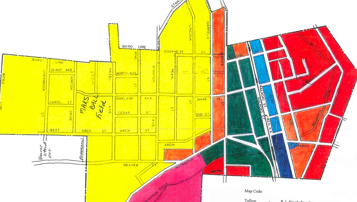Getting a Zoning Variance—What Steps do I Need to Take?

In order to be granted a zoning variance through the New York State Zoning Board of Appeals (ZBA), you must demonstrate that existing zoning restrictions have caused “unnecessary hardship.” You’ll need to satisfy certain conditions to prove unnecessary hardship, including the presentation of evidence that existing zoning restrictions have prevented you from realizing a reasonable return on your property; and assurance that the requested use variance will not alter the essential character of the surrounding neighborhood. Read on to find what steps you’ll need to take and what conditions you’ll to meet in order to be granted a zoning variance…
What is a Zoning Variance?
A zoning variance provides a property owner with the legal permission to build structures or use land in ways that are contrary to existing local zoning conditions. Zoning variances may only be granted by the New York State Zoning Board of Appeals and applicants must meet certain stipulations in order to qualify. In most cases, you will be asking the ZBA to exempt your property from local zoning ordinances that are negatively impacting your ability to make effective use of the property or land.
A zoning variance, once granted, is applied to the existing property, as opposed to the owner. It is said that zoning “runs with the land,” which means that in most cases, the variance will remain in place even as the property changes hands.
While zoning ordinances and laws vary according to New York locale, the terms surrounding the receipt of a zoning variance are uniform through the state. Rules and conditions are outlined by the Zoning Board of Appeals.
What types of zoning variances are there?
There are two primary types of zoning variances—“Use” and “Area.” The Zoning Board of Appeals notes that the rules differ for each of these variance types.
A Use Variance permits the use of land otherwise restricted by zoning regulations. Examples offered by the Zoning Board of Appeals include:
- Commercial use in a residential district;
- Multiple dwelling in a single-family home district; and
- Industrial use in a commercial district.
Because the Use variance requires the use of a property in ways that are otherwise contrary to the nature of the surrounding neighborhood, the threshold for obtaining a zoning variance is purposefully high and places a heavy burden of proof on the property owner to prove that existing zoning conditions have created hardship.
The Conditions for demonstrating hardship and obtaining a Zoning Variance include:
- Proving that existing zoning conditions prevent the applicant from realizing Reasonable Return;
- Demonstrating that the demand for variance is based on Unique Circumstances impacting only the property in question and not extending to the surrounding neighborhood;
- Illustrating that the variance won’t alter the Essential Character of the Neighborhood; and
- Showing that the need for a variance is not the consequence of Self-Created Hardship.
An Area Variance is one in which the ZBA allows for the use of land in a manner otherwise restricted based on the dimensions or physical requirements of applicable zoning regulations. Examples here may include:
- Building an extension to a home;
- Inserting a fence along a property line; and
- Creating off-street parking in connection with a property.
In most instances, area variances provide a more accessible threshold that hinges on demonstrating that the zoning variance won’t negatively impact its surrounding neighborhood. Notably, the language of the area variance places the burden on the Zoning Board of Appeals (as opposed to the applicant) to meet certain standards.
In order to grant an Area Variance, the ZBA must:
- Determine that the variance won’t result in an Undesirable Change in the Neighborhood;
- Consider potential Alternative Strategies to a variance that would be lawful within existing ordinances;
- Address the issue of Substantiality by determining whether the requested variance might be too great a degree of nonconformity within a neighborhood;
- Ensure Minimal Impact on Environment including factors like drainage, noise, traffic congestion, etc.; and
- Ascertain whether or not the need for the variance is the result of a property owner’s Self-Created Difficulty.
What Steps Do I Need to Take to obtain my zoning variance?
1. Determine the zoning designation of your property. You can do this by using the Zoning and Land Use Application (ZoLa), where you can find all pertinent information regarding the zoning of addresses, blocks, and property lot numbers.
2. File a request or written application for your variance with the Zoning Board, including submission of a filing fee.
3. The Zoning Board will typically notify nearby property owners of the requested variance, and may hold a hearing to determine the viability of your requested variance.
4. You will likely be called before a local governing body, such as a city council, for final determination which, if granted, will be issued through the Zoning Board of Appeals.
Learn More
Though these basic steps will take you through the process, The Zoning Board of Appeals notes that “the best way to understand the rules is to examine each in its turn, together with the court decisions that rely on them.”
You can review the rules in their full detail at the New York Department of State website.
Or, for assistance in navigating variances and any other zoning challenges, speak to one of our Real Estate experts today:
- Call: (315) 412-0440
- Start Online